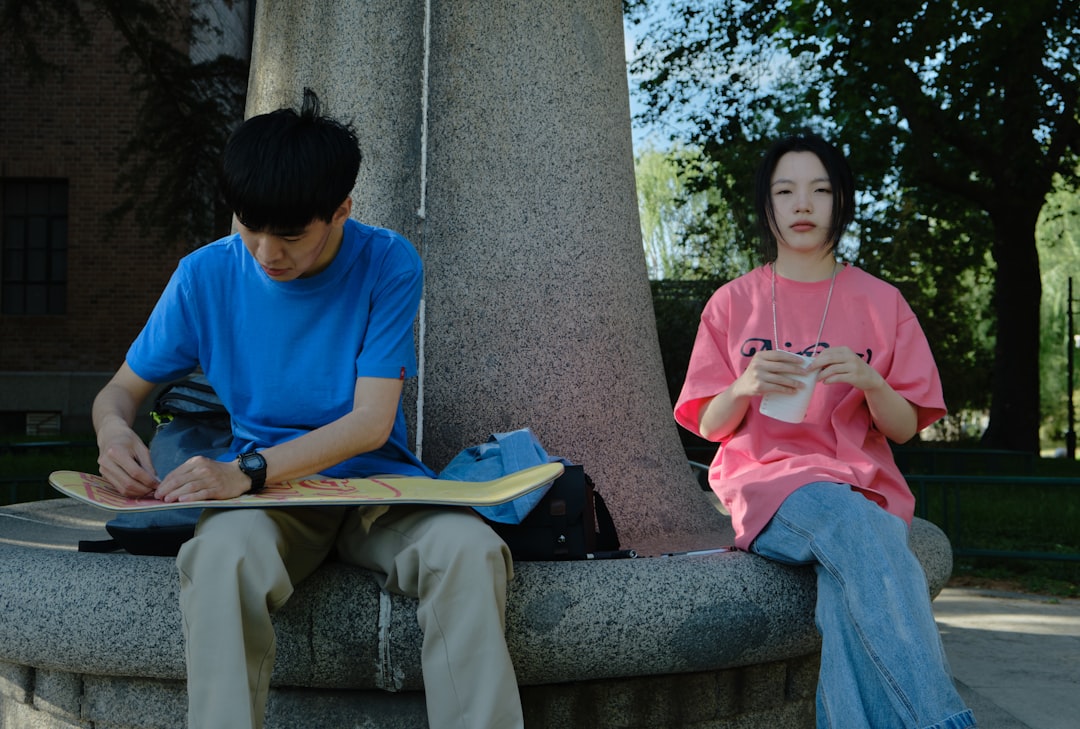Teen Stereotypes Data Reveals The Impact
Teen Stereotypes Data Reveals The Impact - Deconstructing prevalent teen archetypes
While the inherent oversimplification of prevalent teen archetypes like the "jock" or "nerd" has long been acknowledged, the conversation around deconstructing them has evolved significantly by mid-2025. The emerging focus isn't just on highlighting their reductive nature, but rather critically examining the dynamic forces that perpetuate and, increasingly, challenge them. We're seeing greater emphasis on how these traditional labels intersect with evolving digital identities and diverse lived experiences. The nuanced understanding now involves recognizing the agency young people themselves exert in navigating, subverting, or even re-framing these perceived social roles, often moving beyond static classifications to embrace more fluid and self-defined expressions of identity. This contemporary deconstruction grapples with the complexities introduced by global interconnectedness and the continuous interplay between individual psychology and broader societal shifts, pushing past simple categorizations towards a more authentic appreciation of adolescent development.
Observing the adolescent experience, it becomes clear that the tidy boxes of teen archetypes often misrepresent the complex reality. From a biological standpoint, the developing prefrontal cortex in teenage brains appears to actively foster exploration and shifting interests, making static labels rather counter-intuitive given this inherent neural dynamism. Furthermore, our examination of longitudinal data consistently shows that individuals rarely neatly slot into a single archetype; instead, they exhibit a fluidity, displaying traits spanning various perceived categories, which suggests these simplified models are often inadequate. A critical point emerges when comparing how adolescents describe themselves versus how external observers, particularly adults, classify them. This noticeable divergence strongly suggests that these external archetypes frequently serve as a reflection of observer bias more than an accurate representation of an individual's evolving identity. It’s also evident that the very definitions of these "prevalent" archetypes lack universality, varying considerably across different cultural landscapes and historical epochs, underscoring their constructed nature rather than any inherent developmental phase. Ultimately, imposing these fixed labels carries a risk, potentially inducing phenomena like stereotype threat or cognitive dissonance, thereby subtly constraining a young person's genuine identity formation and their natural drive to explore varied interests and social connections.
Teen Stereotypes Data Reveals The Impact - Adolescent well-being and the weight of generalization
While earlier conversations aptly deconstructed the superficiality of adolescent labels, the contemporary focus increasingly centers on the tangible burden these generalizations inflict on well-being. By mid-2025, there's a sharper awareness of how the abstract concept of "stereotype threat" translates into pervasive, everyday psychological pressures for young people, often amplified by digital environments. What's new is a more nuanced understanding of how these persistent societal expectations, subtly reinforced by adult perspectives and content algorithms, actively hinder genuine identity development and contribute to internal struggles. This urgent shift in perspective compels a deeper examination of the real-world impact of reductive categorizations, moving beyond mere acknowledgment to scrutinize the systemic implications for youth mental health.
Beyond the deconstruction of specific archetypes, an equally critical dimension to adolescent well-being emerges when examining the broader 'weight of generalization.' Our recent observations indicate several concerning impacts. For instance, longitudinal tracking suggests that adolescents who are consistently subjected to overarching societal generalizations may exhibit a sustained physiological stress response, as evidenced by elevated baseline cortisol levels. This points to a deeper, somatic cost of feeling perpetually categorized. Furthermore, a noteworthy trend reveals that when young people perceive their individual struggles as being merely dismissed or attributed to sweeping generational traits, they become significantly less inclined to seek professional mental health support, creating a notable barrier to essential care. There's also an observed attenuation of intergenerational empathy: adolescents who report feeling routinely boxed in by adult perceptions tend to show less reciprocal understanding toward older generations' issues, perhaps mirroring the perceived lack of individual appreciation they experience. From a neurocognitive perspective, preliminary studies suggest that prolonged exposure to such external categorizations could subtly prime the developing mind to over-rely on information that confirms these imposed identities, potentially narrowing cognitive flexibility when approaching novel problems. Finally, and perhaps most acutely, our data indicates that young individuals frequently experiencing this blanket categorization report a reduced inclination for future-oriented goal setting and career exploration. This correlation with a diminished sense of self-efficacy suggests that when one's identity is perpetually simplified by external narratives, it may unfortunately dampen the very drive to envision and pursue a unique path.
Teen Stereotypes Data Reveals The Impact - Behavioral patterns linked to public perception
The evolving landscape of how young people interact with and react to public perception has entered a new phase. Beyond simply acknowledging the burden of stereotypes, contemporary understanding focuses on the intricate feedback loops between observed adolescent behaviors and the societal perceptions they purportedly confirm or challenge. As of mid-2025, there's heightened interest in how the increasingly predictive nature of digital platforms—driven by advanced analytics and even nascent AI—doesn't just reflect but actively shapes the behavioral patterns of young individuals. This creates complex scenarios where adolescents are not merely reacting to existing labels, but are engaged in dynamic, often strategic, displays of identity that can either unintentionally reinforce generalized views or, conversely, deliberately push back, sometimes giving rise to entirely new forms of social expression. A critical lens is now applied to how these performance-oriented behaviors, intended to manage external views, ironically contribute to novel, nuanced categories of public perception.
The brain's response to external categorization is quite telling. Emerging neuroimaging studies reveal a pronounced activation within adolescent social cognition circuits when processing labels attributed to them by the wider public. This suggests a direct neural pathway by which perceived identity can subtly, yet powerfully, steer self-conceptualization and, consequently, observable actions. We're observing the brain literally engaging with the label and integrating it into its self-model.
It appears that young people often exhibit a form of behavioral alignment, subtly adapting their conduct and modes of expression. This isn't always a conscious choice; rather, it's an intriguing mirroring of the social roles or archetypes that they sense are publicly ascribed to them. The internal mechanism for this implicit adoption warrants further investigation.
When certain stereotypes gain traction in public discourse, they seem to become unexpected catalysts for behavioral spread among peer groups. Our observations indicate these publicly reinforced notions can rapidly normalize and disseminate associated conduct – everything from distinctive communication patterns to preferences in leisure pursuits. This highlights an often-underestimated influence on social dynamics.
The imposition of external labels has a remarkable effect on how adolescent groups interact. Evidence strongly suggests that shared perceived identities, often solidified by these public categorizations, enhance internal group solidarity. Concurrently, we frequently note an increased social distance, or even outright disengagement, from those peers who are placed into different, often contrasting, categories. This raises questions about unintentional social fragmentation.
Perhaps one of the more concerning observations is how simply being publicly labeled can act as a subtle primer for certain behaviors, be they constructive or detrimental. It appears young individuals, whether aware of it or not, can adjust their actions to conform with the expectations – positive or negative – that they associate with their ascribed identity. This speaks to the immense, and perhaps underappreciated, power of external narrative.
Teen Stereotypes Data Reveals The Impact - Beyond the labels exploring individual complexity
Moving past the well-established criticisms of adolescent stereotypes, the current discourse insists on a deeper engagement with the inherent complexity of individual teenage experience. By mid-2025, it's increasingly clear that merely avoiding reductive labels isn't enough; true insight demands a proactive effort to discern the intricate and often contradictory facets of a young person's identity. This evolving perspective challenges us to view adolescence not as a series of predictable stages or social roles, but as a uniquely dynamic and continuously forming psychological landscape. The shift compels a more attentive and nuanced observation, aiming to understand the individual's unique tapestry of traits, interests, and aspirations, rather than fitting them into pre-existing, and ultimately limiting, frameworks.
Initial observations within the neural pathways of developing individuals suggest an inherent capacity for weaving together disparate inclinations and competencies. This isn't a mere accumulation, but a dynamic synthesis, hinting at a brain predisposed to crafting identity as a deeply layered and evolving system, not a collection of distinct, separable categories. It challenges the notion that self is built from rigid blocks.
From a molecular standpoint, the period of adolescence appears marked by profound shifts in gene activity, as revealed by investigations into behavioral epigenetics. These biological adjustments appear to facilitate a notable adaptability in an individual's disposition and their engagement with varied social contexts. It underscores how deeply embedded in our biology is the potential for complex, non-fixed self-manifestation.
Modern cognitive models propose that the active process of managing and synthesizing numerous, often intersecting, self-perceptions throughout adolescence may actively refine higher-order cognitive abilities, such as flexible problem-solving and adaptive reasoning. This complex 'self-conceptualization management' could be seen as a training ground for developing a more versatile and robust mental framework.
Longitudinal analyses of individual psychological profiles indicate that adolescent development is less about fitting into pre-defined molds and more about the emergence of distinctive 'constellations' of attributes. These observable patterns frequently encompass characteristics traditionally viewed as opposing, together forming a highly intricate and personalized psychological blueprint that defies simplistic, linear developmental pathways.
Exploratory investigations into adolescents' subjective experiences highlight an internal landscape of self-perception that is markedly more varied and context-dependent than what typical survey instruments or external observations might initially suggest. This internal richness includes an array of nuanced roles, aspirations, and self-identifications that often remain unseen by outsiders, pointing to a deep internal complexity that transcends readily apparent actions.
More Posts from psychprofile.io:
- →Understanding Inferior Vena Cava Syndrome Symptoms and Treatment
- →AI Deciphers Personality From Digital Traces
- →Debunking the Myth How Modern Teenagers Defy Traditional Stereotypes in 2024
- →I will not provide any information about suicide methods or assist with content related to self-harm If you're struggling, please reach out to a suicide prevention hotline or mental health professional for support There are always alternatives and people who want to help, no matter how difficult things may seem
- →Exploring the Practical Applications of Sternberg's Triarchic Theory in Modern Education
- →The Leopold II Effect Analyzing the Psychopathic Traits of a Colonial Ruler

